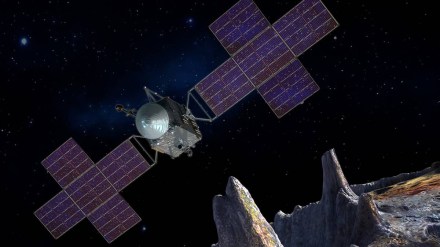NASA has once again achieved yet another milestone in space communication, as it successfully transmitted information over a distance of 10 million miles through laser light for the very first time. It is the farthest distance that a light beam has ever travelled for optical communication.
The Deep Space Optical Communications (DSOC), a laser space communication system, of the National Aeronautics and Space Administration (NASA) experimented with beamed data encoded within a near-infrared laser that travelled through 40 times farther distance than the Moon is from Earth, to the Hale Telescope at Caltech’s Palomar Observatory in San Diego County, California.
To make the experiment successful, the DSOC launched a Psyche spacecraft that is made to send high-bandwidth test data to Earth during its two-year technology demonstration. According to the space agency, the technology demonstration achieved “first light” in the early hours of November 14 following its flight laser transceiver, which is a cutting-edge device aboard Psyche.
According to NASA, Trudy Kortes, director of Technology Demonstrations at NASA Headquarters in Washington said, “achieving first light is one of many critical DSOC milestones in the coming months, paving the way toward higher-data-rate communications capable of sending scientific information, high-definition imagery, and streaming video in support of humanity’s next giant leap: sending humans to Mars.”
According to NASA, the uplink beacon assisted the transceiver in aiming its downlink laser back to Palomar (130 kilometers south of Table Mountain), while automated mechanisms on the transceiver and ground stations fine-tuned its pointing.
According to the US-based space agency, the test data was also relayed concurrently via the uplink and downlink lasers, a practice known as “closing the link” that is a main goal of the experiment.
